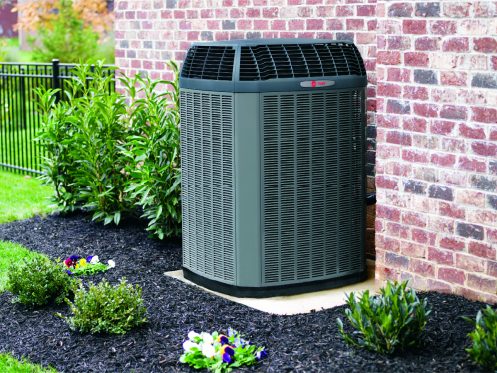Heaters all over the Guadalupe Valley—all over Texas—are in for a heavy workload in the next few days. We thought this a great time to talk about one of the most important components operating in many AC/heating systems during this kind of weather: the heat pump.
What Does a Heat Pump Do?
Even when it feels cold outside to people, there’s still enough heat in the air for a heat pump to extract some of that heat and “pump” it into your home. Basically, heat pumps move and transfer heat as opposed to generating it. This fact allows these systems to be extremely energy efficient.
All Heat Pump Systems Include Back Up Heating
Every heat pump system includes a “heat strip” component. These strips, which are designed with more traditional technology, are coil-like elements that generate heat when electricity flows through them. When your system fan blows air across them, these strips distribute that heat out into your home.
Heat strips are much less energy efficient than a heat pump. This is why heat strips are designed into these systems for auxiliary or emergency use. If the outside temperature gets really, really low—significantly below freezing—there may not be enough heat in the outside air for your heat pump to do its job alone. At such times, the system kicks the heat strips into operation, supplying any needed supplemental heat so the heat pump can keep pace.
Heat Strips are a Costly Option
It’s important to note that heat strips need a lot more energy to run compared to a heat pump. For this reason, relying on heat strips for any extended amount of time can drive up your electric bill.
Keep Your Thermostat at 68 Degrees
Since extreme, record cold can force a heat pump system to draw on supplemental strip heating, it’s important to keep your thermostat at 68 degrees or as low as you can stand. The less your system kicks on and off during extreme cold, the less work the heat pump will have to do and the less auxiliary heat it will need to draw from the heat strips.
Additionally, if you’ve lowered your home’s temperature because you’ve been away and want to warm it back up, a heat pump will work best if you raise the thermostat in two-degree increments. More than two degrees at a time may make the system fall back on the heat strips for support, unnecessarily driving up your electric bill and placing undo strain on the heat pump.
Don’t Use Emergency Heating Unless Absolutely Necessary
Switching a heat pump system to emergency mode forces the system to rely 100% on the heat strips. Since these strips require much more energy, your electric bill could skyrocket. Subsequently, since heat strips use more energy, they put more strain on the grid, too. The more heat strips used in more systems at once across the state, the greater the likelihood of power shortages, which in turn increases the chances of ERCOT EEAs.
It’s important, then, not to use emergency mode unless your heat pump isn’t functioning. Even then, you should only use the heat strips as a short-term solution until the system can be repaired. Paying to repair the heat pump is a much better option than relying on heat strips to heat your home—especially in the long run.
Follow GVEC on Facebook (@GVECsocial), Twitter (@GVEC_Tweets) and Instagram (@GVEC_INSTA), and subscribe to the gvec.org blog for year-round efficiency tips and important updates about state-wide calls for power conservation when extreme weather events hit the South Central Texas region.



